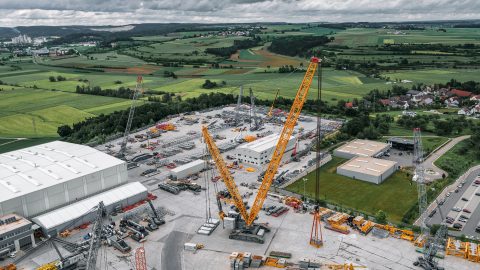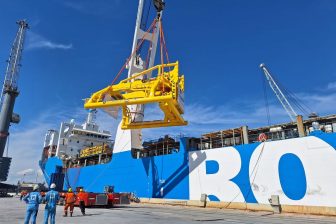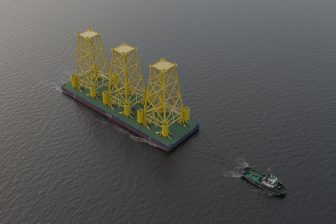
Denzai acquires Liebherr’s 2500-ton crane to handle growing wind components
Japan’s heavy lifting and engineered transport specialist, Denzai, has boosted its fleet with the acquisition of a 2500-ton crawler crane manufactured by Liebherr. With the addition of the LR12500, Denzai will become the first company in Japan and APAC to own such a unit.
According to the company, the crane will be shipped from the German manufacturer in July 2024. It will start operations in October at S-Oil’s Shaheen project in Ulsan, South Korea. Subsequently, the unit will be deployed in Japan and overseas.
The acquisition of the LR12500 came shortly after the company secured a 12.2 billion yen ($80.6 million) loan to respond to the demands of the growing Japanese onshore and offshore wind sector. In its statement, Denzai said that the height and weight of offshore wind turbines are becoming larger and larger.
The construction of even larger offshore wind turbines is expected to become impossible with the 1350-ton crawler crane, which is the largest crane Denzai currently owns. In Round 1 and Round 2 of offshore wind turbine construction projects currently underway in Japan, the weight of the towers will be different from the European specifications, and the Japanese specifications are expected to be even heavier.
In addition, the working radius of the cranes is expected to be larger than in Europe, because some Japanese ports have less strong wharves than those in Europe, and the cranes must be installed further away from the wharves.
Furthermore, if the nacelle weight exceeds 800 tons, it will be impossible to lift the nacelle at the far side of the vessel with a single 1350-ton crane, and Denzai estimates that two 1350-ton cranes will be required. On the other hand, the LR12500 can lift up to 951 tons with a working radius of 48 metres, thus satisfying the requirement
with only one crane.
The decision was made to install the crane to meet the height and weight requirements for offshore wind power in Round 1 and Round 2, and to assemble and construct offshore wind components with the crane for the floating offshore wind farm that is expected to follow.
You just read one of our premium articles free of charge
Register now to keep reading premium articles.



